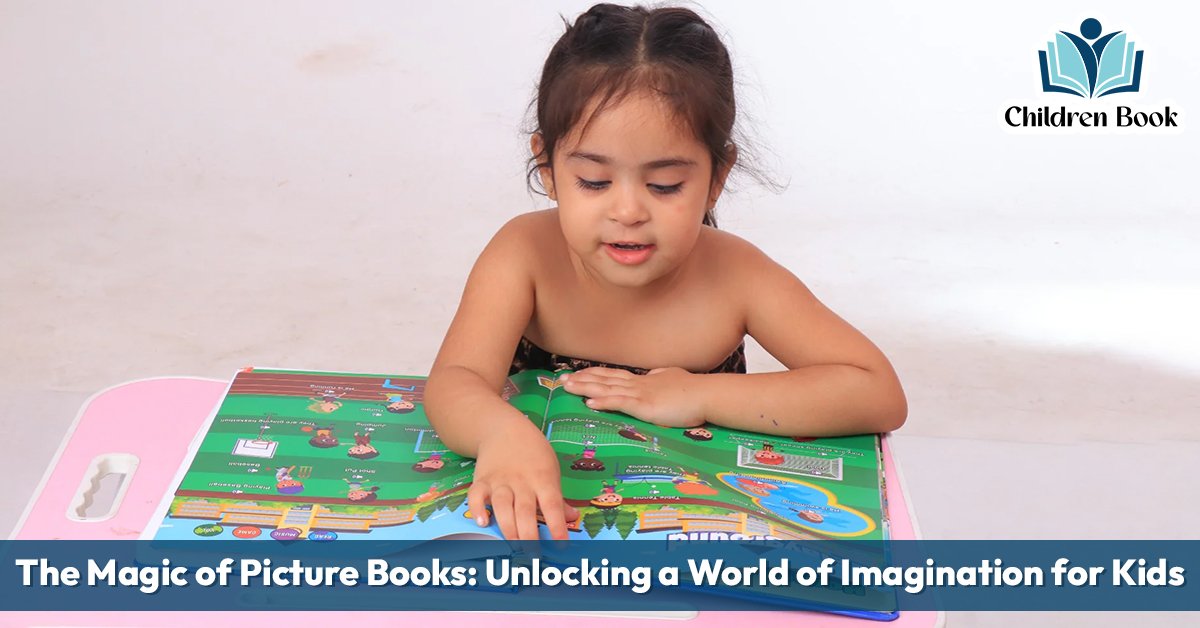Picture books are a beloved genre of literature that has enchanted readers of all ages for generations. These books, characterized by their combination of vivid illustrations and engaging narratives, hold a special place in the world of literature. In this comprehensive exploration, we’ll delve deep into the various aspects that make picture books so captivating, from their power of visual storytelling to their educational value and beyond.
The Power of Visual Storytelling
At the core of every picture book lies the remarkable power of visual storytelling. Unlike traditional books that rely solely on text to convey the story, picture books leverage the synergy between words and illustrations to create a rich and immersive reading experience. The illustrations in picture books serve as windows into the story, offering readers glimpses into the characters, settings, and emotions portrayed within. Whether it’s the vibrant colors, expressive characters, or intricate details, the visual elements of picture books have a unique ability to captivate readers and draw them into the narrative.
Imagination and Creativity
One of the most enchanting aspects of picture books is their ability to spark imagination and creativity in young readers. From fantastical worlds inhabited by mythical creatures to ordinary settings transformed by a child’s imagination, picture books transport readers to realms where anything is possible. The vivid illustrations serve as catalysts for the imagination, inviting readers to embark on imaginative journeys filled with wonder and discovery. As children engage with picture books, they are encouraged to explore their creativity, envisioning new possibilities and dreaming up their own stories.
Emotional Connection
Picture books have a profound ability to evoke emotions in readers of all ages. Through their heartfelt storytelling and expressive illustrations, these books elicit a wide range of emotions, from laughter and joy to sadness and empathy. The characters and situations depicted in picture books resonate deeply with readers, allowing them to connect with the story on a personal level. Whether it’s the triumph of friendship, the poignancy of loss, or the warmth of family, picture books touch the hearts of readers and leave a lasting impression.
Educational Value
In addition to their entertainment value, picture books offer numerous educational benefits for young readers. These books serve as valuable tools for language development, helping children expand their vocabulary, improve their language skills, and develop a deeper understanding of grammar and syntax. Picture books also introduce children to a wide range of topics, from science and history to social issues and cultural diversity. Through engaging narratives and informative illustrations, picture books foster a love of learning and instill a thirst for knowledge in young minds.
Diversity and Representation
A key aspect that makes picture books so captivating is their commitment to diversity and representation. In recent years, there has been a growing emphasis on the importance of inclusivity in children’s literature, and picture books have played a pivotal role in this movement. By featuring diverse characters, cultures, and perspectives, picture books reflect the rich tapestry of the world we live in and celebrate the beauty of human diversity. These books not only provide readers with windows into different cultures and experiences but also promote empathy, understanding, and acceptance.
Nostalgia and Childhood Memories
For many adults, reading picture books evokes a sense of nostalgia and fond memories of childhood. The act of revisiting beloved picture books from one’s youth can transport adults back in time, allowing them to relive cherished moments and reconnect with the magic of childhood. Whether it’s the familiar illustrations, the comforting rhythm of the text, or the nostalgia-inducing themes, picture books hold a special place in the hearts of readers, serving as treasured mementos of bygone days.
The Role of Picture Book Authors and Illustrators
Behind every captivating picture book is a team of talented authors and illustrators who bring the story to life. Authors craft engaging narratives that resonate with readers, while illustrators create stunning visuals that complement and enhance the text. Together, they collaborate to create books that engage, inspire, and entertain readers of all ages. The creative process behind picture books is a labor of love, with authors and illustrators pouring their hearts and souls into every page to create works of art that leave a lasting impact on readers.
Conclusion
In conclusion, picture books are captivating for a multitude of reasons. From their power of visual storytelling to their educational value, emotional resonance, and commitment to diversity, these books enrich the lives of readers young and old. Whether you’re a child discovering the magic of reading for the first time or an adult rediscovering the joy of childhood favorites, picture books continue to enchant and inspire us with their timeless tales and timeless appeal.
This expanded version of the article provides a more comprehensive exploration of the captivating nature of picture books, offering readers a deeper understanding of why these books hold such a special place in the world of literature.
Frequently Asked Questions
While picture books are primarily targeted towards children, readers of all ages can enjoy them. The captivating illustrations and engaging narratives appeal to adults as well, making picture books a beloved genre for readers of all ages.
Picture books are typically designed for children ages 3 to 8, but there is no strict age limit. Children younger than 3 may enjoy picture books with simpler illustrations and stories, while older children may still appreciate the rich storytelling and vibrant artwork found in picture books.
Picture books play a crucial role in early childhood development by promoting language acquisition, literacy skills, cognitive development, and socio-emotional growth. Through engaging stories and colorful illustrations, picture books stimulate children’s imagination, creativity, and critical thinking skills.
A good picture book combines captivating storytelling with engaging illustrations. It should have a compelling narrative that resonates with readers and memorable characters that evoke empathy and emotional connection. The illustrations should complement the text and enhance the overall reading experience.
Yes, there are various types of picture books, including fiction, non-fiction, concept books, wordless books, and bilingual books. Each type serves a different purpose and caters to different interests and reading levels. Whether it’s a bedtime story, an educational book, or a humorous tale, there’s a picture book for every reader.


